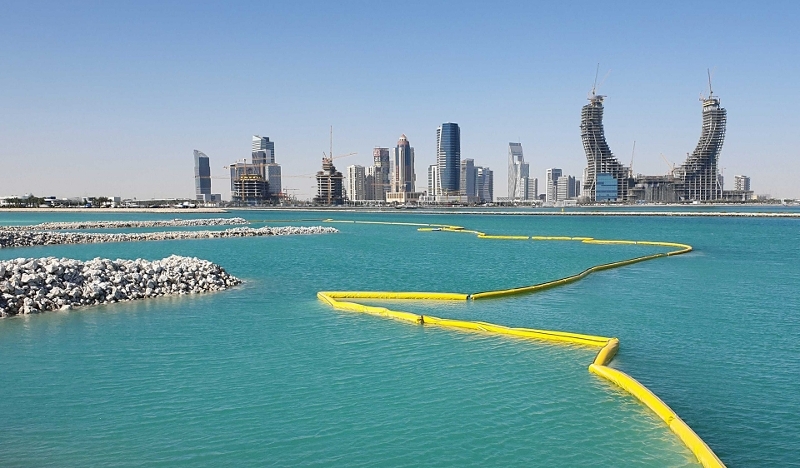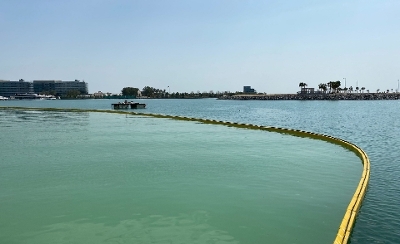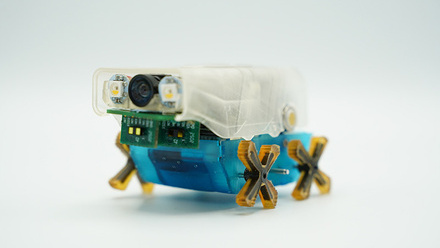The changing role of silt curtains
Silt curtain applications are evolving from dredging sites to broader sediment control. Chris Reeder, from supplier of engineered solutions for sustainable coastal and marine development, Ecocoast, UK, explains more.

As the environmental impact and regulatory constraints associated with water pollution become an increasingly growing concern, silt curtains are being used for a range of environmental purposes. Originally designed to contain the spread of sediment during dredging and reclamation, today, they are used for processes including dewatering, outfall containment to intake protection, stormwater management, agriculture impact reduction projects and many others.
Where sediment control is required in a marine environment, the first step is to identify the required parameters and desired objective achieved by installing a silt curtain, reduction in turbidity outside the containment area, limiting the spread of potential heavy metals or contaminants or physical work area demarcation for example. From here providing the correct model, layout and anchoring configuration are all important criteria to ensure silt curtains provide an effective solution. There are a multitude of factors that influence model and anchoring selection, from current and wave height, to water depth, location, seabed condition, layout configuration, equipment, type of construction works, type of sediment, environmental regulations and sensitivity, to name a few.
It is important to note that there is not a ‘one size fits all’ approach. Each design has multiple factors that are relevant to a project’s specific conditions and requirements. Individual assessment to provide the right silt curtain is essential to success. For example, a bespoke barrier with interchangeable depths can be a flexible and robust solution to meet environmental and operational requirements.
Dredging and dewatering
In the dredging industry, whether it is hydraulic or mechanical, all dredging projects are subject to some level of particle suspension. From land reclamation to the construction of ports, such as the brand-new Dubai Harbour, of all the systems that can be used to contain particle or contaminants suspension, silt curtains provide one of the most economical and environmentally friendly solutions. Silt curtains in Europe are also used for maintenance dredging of areas that might have concentration of pollutants such as chemicals and heavy metals in the marine sediments. Containment of these can be more of a focus than reduction in turbidity as many European rivers are already high in turbidity due to other factors such as bank erosion and stormwater pollution.

One example of dewatering using a silt curtain is during the building of the Louvre in Abu Dhabi, UAE. Ecobarrier silt curtains were installed as a precautionary measure to contain sediment in the event a newly flooded area required emergency dewatering. The area, located on a waterway, had been reclaimed to enable construction. Upon completion of construction works, the reclaimed area was to be excavated and then flooded. In the event of a leak, the pumps would need to be reactivated and the area dewatered again. The silt curtains were installed before flooding to contain any sediment from the dewatering process.
Protection and sustainability
The primary benefit of containing turbid water is to limit fine materials from travel to areas such as ecologically sensitive habitats, sea-grass meadows, corals, mangrove forests and shellfish beds or other sensitive areas, such as sites with socio-economic benefits and water intakes used for desalination or cooling water. Or in some cases to contain floating pollutants as the oil at the top of the curtain is often made from the same or similar material as an oil boom.
Implementing a secure silt curtain can help maintain the well-being of marine ecosystems, keeping them healthy and thriving, undisturbed. Some silt curtains can be reused instead of going to landfill. As sustainability reporting becomes a requirement for investment, this is an important consideration factor.
Beyond dredging
In recent years the demand has grown for silt curtains for more innovative uses. These include containing fertilisation runoff in river and estuaries from farming waste, allowing agriculture to significantly reduce its impact on the environment. They are also employed in land reclamation in the Maldives and marine construction in The Netherlands and Belgium. Plus, there are significant needs for use in shoreline restoration projects, where areas of land have been destroyed by storms.
Examples of recent use include surrounding a glass-bottomed floating structure to improve visibility. This work reduced turbidity caused by poor water circulation and surrounding reclamation works. The silt curtains prevent contaminated water from entering, and the clean water ensures the glass-bottomed structure can deliver on its promise of visibility.
As more ambitious construction projects begin, which require new and unique methodologies, there are likely to be more innovative uses for marine protection barriers globally.
What are silt curtains made of?
Polymers play a large role with plastic, foam or fibreglass pods or floats as well as the curtain itself which is often PVC, Woven Polypropylene, Neoprene or other custom materials. Metals appear for ballast chains and fixtures and fittings.








